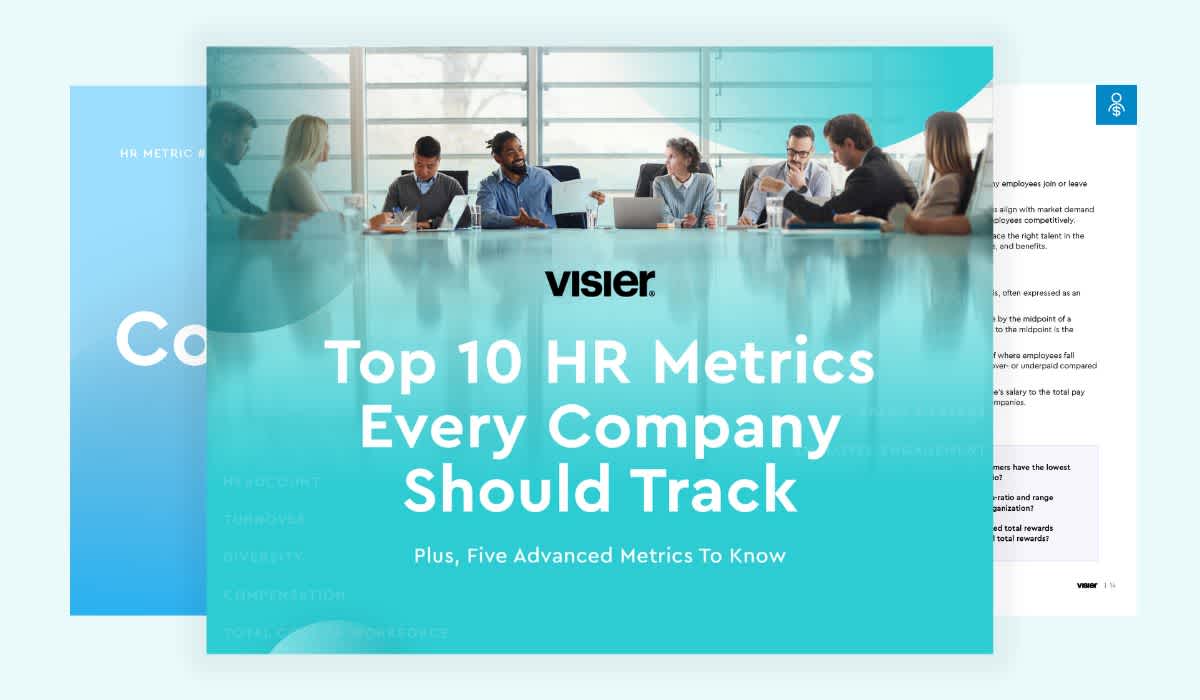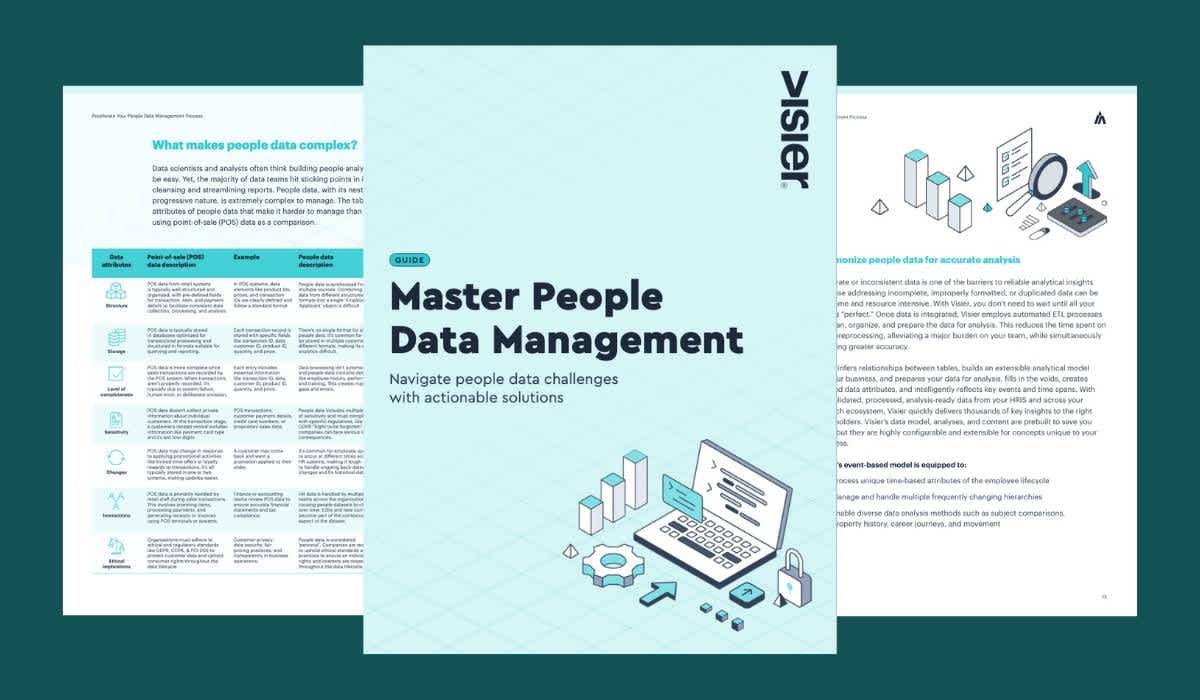The Rooney Rule: Using it to Kick Off Your Diversity Recruitment Strategy
The NFL's Rooney Rule is a jumping-off point for how organizations can DEIB efforts. Find out how, plus the diversity metrics to track.

Diversity and inclusion in the workplace remains a top priority for HR and recruitment teams across the globe. And with good reason. Study after study, including a landmark one from McKinsey, prove that, as companies become more diverse, they are more likely to outperform their less diverse peers in terms of profitability. Diversity is simply good business, which is why the NFL’s Rooney Rule—which mandates that NFL teams interview at least one minority or female candidate for senior positions—has received so much attention over the years.
But while the Rooney Rule has been touted as a strong model for boosting diversity and inclusion—both in the NFL and in the corporate world—recent studies have shown that it doesn’t quite go far enough to guarantee it. Instead, organizations should use it as a starting point that informs wider and more in-depth D&I initiatives.
This article will use the Rooney Rule as a jumping off point to explain how organizations can and should boost their diversity, equity and inclusion efforts.
What is the Rooney Rule?
The Rooney Rule is a policy first introduced by the NFL in 2003, and named after Pittsburgh Steelers chairman Dan Rooney, that mandates league teams must interview at least one woman and one underrepresented minority in the slate of candidates for senior and coaching positions.
Historically, this mandate has only required that female or minority candidates be interviewed, not necessarily hired. In 2022, the rule was expanded to include a hiring quota, which dictates that at least one member of each team’s offensive coaching staff must be either an ethnic minority or a woman.
While the Rooney Rule has its origins in football, it broke into the corporate world in a big way in August 2015, when then President Barack Obama issued a call to action to technology companies. He encouraged them to hire more women and minorities by implementing the Rooney Rule.
During the White House’s first-ever Demo Day, over a dozen major technology companies committed to ensuring more diverse recruitment and hiring practices, including Facebook, Amazon, Microsoft and Box. Since then, companies like Mozilla, Google, and Restaurants Brands international have all announced diversity and inclusion initiatives inspired by the Rooney Rule.
But, as of 2023, the Rooney Rules has achieved mixed results at best. An in depth study of the Rooney Rule, conducted by the Washington Post, concluded that “such a rule, by itself, is not enough.”
The issue, the report found, is that mandating that female and ethnic minority candidates be interviewed does not go far enough to ensure true diversity and inclusion. In other words, it does not guarantee that those candidates will be given a fair shot in the hiring process, nor will it result in a truly diverse and inclusive workplace.
It’s a good start, and the spirit and goal of the rule is positive, but it must be accompanied by deeper DEI initiatives to make a true impact. And those initiatives need to start with ensuring diversity in recruitment.
To do that, companies need to truly understand and believe in the benefits of diversity and inclusion. And once they do, they need to create and implement strong processes, analytics, and incentives company-wide to ensure that it’s a priority for all stakeholders.
Before we dig into some of those diversity recruitment tactics, let’s step back and discuss why the spirit of the Rooney Rule matters for business.
Why does the Rooney Rule matter in business?
The Rooney Rule plants a firm, high-profile flag in the ground in support of diversity in recruitment. And, as mentioned, companies that prioritize diversity reap significant benefits over those that don’t.
As shown by McKinsey, those benefits include:
Higher revenue and profits
Deeper innovation
More variety of ideas
Stronger company culture
Better employer branding
Increased employee engagement and retention
Strong reputation amongst customers and prospects
In fact, McKinsey found a direct correlation between diversity in leadership and stronger overall performance. Companies where more than 30% of the executive team are women were far more likely to outperform companies where that percentage was lower. Specifically, gender diverse companies were found to be 48% more likely to outperform their competition.
The benefits of diversity in the workplace are well founded, which is precisely why the Rooney Rule has gained so much notoriety over the years.
But, as explained, the Rooney Rule alone is not perfect. Instead of following it verbatim, companies should instead take the spirit of the Rooney Rule and go much deeper to create the outreach, interview, and inclusion policies needed to truly foster diversity in recruitment.
Let’s discuss how to do that.
4 diversity metrics that support Rooney Rule initiatives
Diversity in recruitment comes from introducing policies and processes that remove bias from the hiring process, and from using demographic and hiring analytics to monitor the candidate pipeline. Together, this ensures that organizations can take a proactive approach to diversity recruitment, and have the objective data to measure and improve their approach over time.
Here are four key diversity metrics that organizations should be tracking to ensure objectivity and inclusivity in their recruitment efforts.
1. Who’s getting interviewed?
To ensure a diverse candidate pool, organizations need to make sure that the applicants coming through the pipeline fit their diversity requirements and ratios.
To do that, organizations should define what diversity means to them, and what ratio of their talent pool should be diverse candidates. The first requirements include detailing the demographics that define “diversity” at the organization. What groups of people should be prioritized in the diversity recruitment initiatives?
Next, that organization needs to establish a benchmark ratio for how much of a new candidate pipeline should include diverse candidates. This will ensure that both the profile of a diverse candidate, and the desired number of diverse candidates, are clearly defined upfront.
This can be boiled down into one metric: diversity of interviewed candidates.
If recruiters are seeing low numbers of diverse candidates at the top of the funnel, then this indicates that they may need to re-evaluate their sourcing channels or screening tools. Blind resume screening, more inclusive job descriptions and job ads, or using AI-driven applicant tracking software can all help to reduce bias in the shortlisting phase.
2. Who’s moving through each stage?
Recruiters should also keep track of diversity ratios at each stage of the hiring process. This will show whether or not the desired ratio of diverse candidates holds steady at each stage. If it doesn’t, they’ll be able to flag where in the process diverse candidates drop off.
Metrics to watch: ethnic diversity by hiring stage / female diversity by hiring stage.
Use this metric to track the movement from the application stage to through interviewing, eventually, offers accepted. This will make it clear where in the hiring process diversity candidates either rescind their candidacy or are disqualified. A drop in diversity at different stages requires a different response. For example, if diverse candidates are rejecting offers of employment, recruiters need to understand why and make a change.
The underlying reasons behind this drop off are varied. It could indicate the presence of bias in the interviewing process. Or it could indicate something about the candidate experience that is exclusionary toward diverse candidates. Tracking the volume of candidate drop offs, and finding patterns in timing, will help recruiters zero in on specific issues.

3. Who’s doing the interviewing?
Research shows that there is reduced bias when the diversity of a job interviewer is matched to the candidate. In fact, the 2020 Inclusion Index by Diversity Best Practices, revealed that of the 98 organizations surveyed (a list that includes Johnson & Johnson, Accenture, New York Life, and more), 75% require the panel of interviewers to be diverse.
Metrics to watch: Diverse interviewer vs non-diverse interviewer
Recruiters can use people analytics to monitor how matching the gender or ethnicity of the interviewer, for example, to a candidate impacts the hiring process and the maturity of diverse candidates through the funnel. Are more, less, or the same number of diverse candidates moving through the funnel? Make adjustments as necessary.
To further reduce bias in the interviewing process, recruiters should consider tactics like structured interviews and objective scorecards to ensure that all candidates are screened and graded using the same metrics. This helps to remove bias and subjectivity from the interview process, thereby making it fairer for all candidates, regardless of background.

4. Who’s getting hired?
Recruiters should keep an eye on how many women and underrepresented minorities are getting hired compared to their existing workforce, industry standard, and DE&I goals.
Metrics to watch: New diverse hires vs. existing workforce / New diverse hires vs. industry benchmark
This data will show whether the organization is meeting their diversity goals and keeping inline with the rest of the industry. If the numbers are low, this is a good indication that the company needs to review their recruitment process to identify areas of improvement.
Alternatively, if the hiring process is doing well and landing a diverse set of new employees, but there is little change in overall organizational diversity, then this may indicate an issue with retaining diverse employees. This, by extension, might signal an issue with inclusion policies, rather than diversity recruitment.
Remember: It’s not enough to say ‘we interview more diverse candidates’ or ‘diversity went up by 10%.’ When improving workforce diversity, it’s essential to keep track of hiring success rates by diversity groups. For example, if the goal was to hire more veterans, the company needs to be able to show how many were successfully hired.
Workforce analytics easily separates your diverse candidates by group and shows you how successful you were in each category.
How companies can use the Rooney Rule in hiring and recruitment
The Rooney Rule can be used as a guideline to help kickstart a broader diversity and inclusion effort. It’s a solid starting point that focuses on increasing the number of inbound candidates that come from diverse backgrounds.
Once a company commits to the spirit of the Rooney Rule, there are a number of ways to make the goal of more diverse hiring a reality.
These include:
Creating strategies to boost diversity at the top of the recruitment funnel. The more diverse candidates that come in at the top of the funnel, the more will filter out the bottom as new hires. Recruiters should use deliberate sourcing tactics to attract diverse candidates, including removing bias or targeted language from job ads and descriptions and diversifying their outreach platforms.
Applying the Rooney Rule to all roles, not just leadership. The Rooney Rule was originally created to boost diversity in leadership positions. There’s no reason it has to be exclusive to senior roles. Recruiters should strive to interview minority candidates and females for all positions, regardless of seniority.
Using analytics to understand where diverse candidates are coming from. Recruiters should leverage data and analytics to identify key sources for diverse candidates, and double down on them.
Creating a referral program for diverse candidates. Chances are, diverse employees will have deep networks within their own communities. This is a goldmine for recruiters to not only find diverse candidates, but potential high performers who have been pre-vetted by existing employees.
Offering internships to targeted minority groups and women. Active outreach and enablement programs like internships and scholarships are a great way for companies to support diverse candidates and women in the workplace. This shows both a commitment to diversity, and that the company is creating tangible paths to success for these individuals.
Developing an employer brand that showcases diversity. Candidates pre-screen themselves before applying for roles. They seek out companies that share their values and offer a welcoming brand. Companies that are serious about boosting diversity recruitment efforts should take a hard look at their employer brand and the message it’s sending to diverse candidates. Tweak and improve that branding as necessary.
Creating an inclusive culture that appeals to diverse candidates. Likewise, candidates look for cultures that align with their own values. And diverse candidates need to feel that they belong and are treated equally. This is where recruitment and inclusion meet. The culture should be genuinely inclusive to ensure that diverse candidates both want to apply to the company, and want to stay there once hired.
Again, the Rooney Rule is a great jumping off point to all of these more deliberate tactics for boosting diversity hiring and inclusion initiatives.
Make diversity a priority throughout the employee lifecycle
Keep in mind that inclusivity doesn’t end once the job has been filled. Companies need to regularly check on the health of their workforce diversity. It is common for organizations to invest a lot of energy into hiring a diverse group of employees only to find they are losing them as fast as they are hiring them – leading to no overall change in organizational diversity.
A powerful people analytics solution provides the analytics and planning capabilities that make diverse recruitment and retention much easier to oversee. From beginning to end, insights that are both easy to access and analyze will enable HR and managers to better comply with the desire for more workforce diversity.
And while the Rooney Rule isn’t perfect, it’s a fantastic starting point for businesses who are serious about diversity. If businesses want to succeed now and in the future, being proactive with diverse hiring is non-negotiable.

Read more about DEIB:
Guided Diversity Planning: 9 Steps to Deliver on Your Pledge
Diversity and Inclusion: 5 Lessons Learned from Top Companies
On the Outsmart blog, we write about workforce-related topics like what makes a good manager, how to reduce employee turnover, and reskilling employees. We also report on trending topics like ESG and EU CSRD requirements and preparing for a recession, and advise on HR best practices like how to create a strategic compensation strategy, metrics every CHRO should track, and connecting people data to business data. But if you really want to know the bread and butter of Visier, read our post about the benefits of people analytics.



